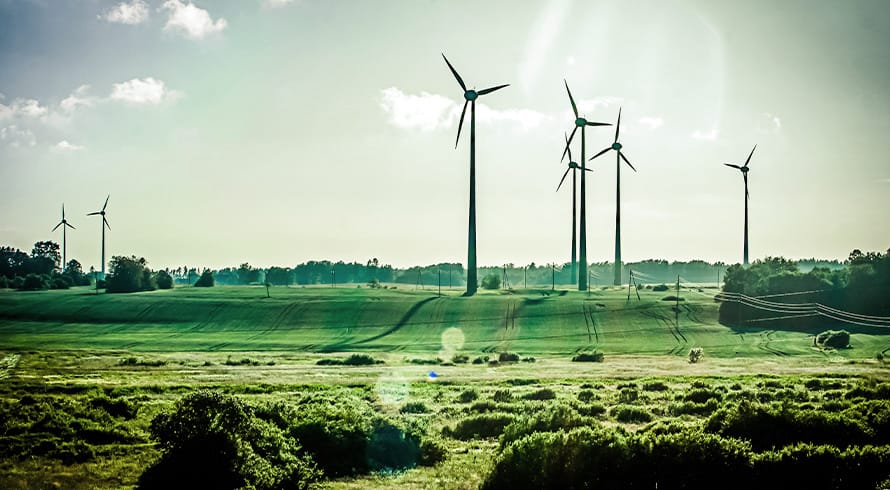Issues to consider before introducing a carbon tax in Kenya
At a glance
- The global climate crisis necessitates urgent action to reduce greenhouse gas emissions, with Kenya recognizing the need for a green transition.
- Kenya is considering the implementation of a carbon tax as part of its low carbon climate resilient development strategy, following the examples of other African countries such as South Africa.
- Critical issues to consider before imposing a carbon tax include determining the tax base and incidence, setting an appropriate tax rate, addressing competitiveness and leakage concerns, establishing compliance and oversight mechanisms, and deciding how the tax revenues will be allocated to support government objectives and promote a low-carbon transition.
Among the draft’s suite of proposed measures, one that has elicited great attention is the proposal for Government to explore the viability and design of a carbon tax. The aim of such an initiative is to lower GHG emissions and provide a revenue stream that can be used to meet broader government objectives. Specifically, the draft policy framework proposes a carbon tax to facilitate the switch to clean energy and foster the polluter pays principle. It also calls for an evaluation of the modalities to include afforestation or reforestation projects in the national carbon tax scheme.
While taxes have been imposed since time immemorial, carbon taxes are of more recent origin. As of April 2022, the World Bank reports that there are only 37 carbon tax initiatives in different countries around the world, though this number is likely to increase as more countries seek direct carbon pricing as a response to the challenge of climate change.
Other African countries exploring carbon tax
Should the draft policy framework be adopted, Kenya will join other countries with carbon taxes under consideration. These include African compatriots Morocco, Ethiopia, Cote d’Ivoire, Senegal, and Botswana, with lessons to be gleaned from South Africa, currently the only country in the continent that has designed and implemented such a scheme.
It took years for South Africa to establish its carbon tax framework, with a gradual introduction of carbon taxes being considered by the South African Government in its National Budget as early as 2012, and the country’s carbon tax law eventually coming into effect in 2019. While it could take less time for Kenya to design its framework, the country will need to roll out a robust, inclusive and efficient stakeholder consultation process and carefully consider the following critical issues before imposing a carbon tax.
Critical issues to consider
Tax base and incidence of tax
One of these is an understanding of the tax base and incidence of tax. A carbon tax can be levied across major economic sectors, including, but not limited to, industrial production, energy, transportation, manufacturing and agriculture. Further, the tax can be levied on downstream consumers, midstream traders or upstream production depending on which achieves the highest emissions reduction coverage for the lowest administrative burden.
There is a need to determine the relevant tax base and incidence of levying carbon tax in Kenya, informed by the sectors that rank as the highest emitters. However, exemptions would need to be provided for certain sectors or industries, to ensure a careful balance between economic, social and environmental goals. For example, while the agricultural sector is currently the largest source of total GHG emissions in Kenya, consideration of how a carbon tax in this sector affects food security will be paramount.
Applicable tax rate
The applicable tax rate is also another important issue for consideration. Notable factors that determine the carbon tax rate include revenue raised, GHG emissions reductions, and alignment with peer countries and competitors to ensure a level playing field. Nonetheless, the applicable rate is likely to rise over time, as we have seen in South Africa, through the utilisation of a phased approach to the application of the carbon tax. In any event, raising the carbon tax should be done in a way that avoids a drastic rise in production costs and the costs of doing business, often with a burdensome effect on consumers, especially those at the base of the economic pyramid.
Competitiveness and leakage
Competitiveness and leakage should also be high on the list of considerations. Since the goal is to encourage firms and consumers to reduce GHG emissions, the efficacy of carbon tax is measured based on how much this goal is met by firms and industry players. Unfortunately, some companies are likely to shift production to countries not covered by a carbon tax, leading to ‘leakage’. This challenge can be managed through the application of carbon taxes on imported goods, providing rebates to trade-exposed industries, or through tax exemptions.
As an example, the European Union seeks to address the risk of carbon leakage by imposing a carbon price on imports of certain carbon-intensive goods such as iron, steel, cement, fertiliser, aluminium electricity and hydrogen, through what is referred to as a Carbon Border Adjustment Mechanism. The potential economic and diplomatic costs of such a policy always need to be weighed against the benefits, and Kenya should, based on a cost-benefit analysis, critically consider the most suitable way to maintain the competitiveness of its carbon-intensive, trade-exposed industries.
Compliance and oversight
Compliance and oversight are also important issues for consideration before implementing carbon tax. Regulators with relevant capacity must be established to ensure that entities covered by carbon tax accurately measure and report their emissions to tax authorities. It is, however, important to ensure that climate reporting requirements are streamlined so that, pursuant to Kenya’s Climate Change Act, public and private sector entities do not face a regulatory burden as they seek to comply with the additional reporting requirements related to the carbon tax.
Revenue allocation
Before the rollout of a carbon tax, it is also important to consider the use of revenues collected. These revenues should be deployed to facilitate other government objectives including mobilising additional resources to combat climate change, resolving government budgets, and addressing economic burdens for firms and consumers. Ringfencing this revenue to further support green initiatives is instrumental for facilitating a low-carbon transition, and Kenya may consider this approach for the use of carbon tax revenues. The ringfencing model is exemplified by countries such as Ireland, which ringfences its carbon tax revenue towards low carbon transition investments including development of greenways/urban cycling, continuation of electric vehicle (EV) grants, and development of EV charging infrastructure.
Taking a holistic view
The final issue for consideration is how to synergize the different low carbon initiatives in the country in a way that ensures climate change is addressed holistically. One of the ways to attain synergy would be linking the carbon tax regime to Kenya’s recent initiative to establish schemes for emissions trading in the country. Through the Finance Act of 2022, the Government set a reduced corporation income tax of 15% for the first 10 years of operation for companies operating a carbon market exchange or emission trading system, provided these companies are registered with the Nairobi International Finance Centre. A trading scheme is not yet in place, but once it is up and running, allowing entities to minimize their carbon tax liability by trading carbon offsets in this domestic exchange or trading system would be a monumental step for carbon pricing in the country.
A holistic approach to climate action would also necessitate Kenya’s carbon tax liability reduction scheme prioritising the use of certain offsets in the emissions trading system. Ideally these would be offsets from carbon projects emanating from sectors and technologies closely aligned with key government climate policies, such as the priority areas set out in Kenya’s Nationally Determined Contribution, the National Climate Change Action Plan and other policy documents. This approach will enable the inclusion of afforestation or reforestation projects within Kenya’s carbon tax system, which is one of the intentions of the draft policy framework.
Whereas the global climate challenge is pressing and requires a timely response, a thoughtful approach is necessary before a carbon tax can be imposed. Kenya needs to be clear on why it is establishing a carbon tax, what the parameters are within which the carbon tax will operate, who will be obliged to pay the carbon tax, when this obligation will begin, where raised revenues will be directed, and how such a tax will be implemented to ensure the goal of emissions reduction is met, while promoting economic development, equity and the protection of vulnerable persons.
The information and material published on this website is provided for general purposes only and does not constitute legal advice. We make every effort to ensure that the content is updated regularly and to offer the most current and accurate information. Please consult one of our lawyers on any specific legal problem or matter. We accept no responsibility for any loss or damage, whether direct or consequential, which may arise from reliance on the information contained in these pages. Please refer to our full terms and conditions. Copyright © 2025 Cliffe Dekker Hofmeyr. All rights reserved. For permission to reproduce an article or publication, please contact us cliffedekkerhofmeyr@cdhlegal.com.
Subscribe
We support our clients’ strategic and operational needs by offering innovative, integrated and high quality thought leadership. To stay up to date on the latest legal developments that may potentially impact your business, subscribe to our alerts, seminar and webinar invitations.
Subscribe



